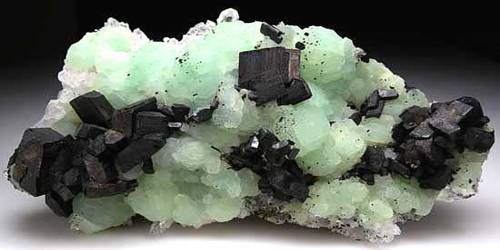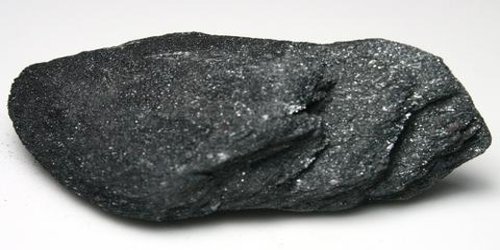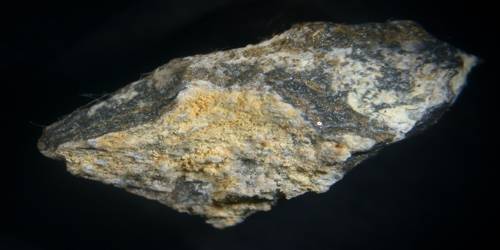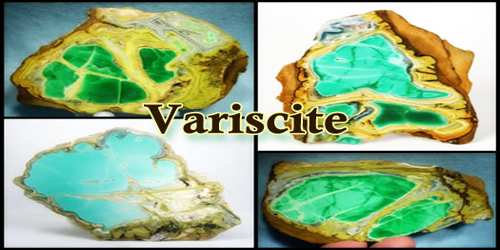Babingtonite is a calcium iron manganese inosilicate mineral with the formula Ca2(Fe, Mn) FeSi5O14(OH). It is a member of the Babingtonite group of minerals. It is unusual in that iron (III) completely replaces the aluminum so typical of silicate minerals. The other members are scandiobabingtonite and manganbabingtonite.
It was first described in 1824 from samples from Arendal, Aust-Agder, Norway (which is its type locality) and was named after the Irish physician and mineralogist William Babington (1757–1833).
It is the official mineral (mineral emblem) of the Commonwealth of Massachusetts.
General Information
- Category: Inosilicate
- Formula: Ca2(Fe, Mn)FeSi5O14(OH)
- Crystal system: Triclinic
- Crystal class: Pinacoidal (1) (same H-M symbol).

Properties
Babingtonite can be identified in the field by its greenish black, brownish black, and black variations. It is a very dark green to black translucent (in thin crystals or splinters) mineral crystallizing in the triclinic system with typically radial short prismatic clusters and druzy coatings. It occurs with zeolite minerals in cavities in volcanic rocks. Babingtonite contains both iron (II) and iron (III) and shows weak magnetism. It has a Mohs hardness of 5.5 to 6 and a specific gravity of 3.3.
- Color: Dark green to black
- Crystal habit: Prismatic crystals
- Cleavage: Perfect on {001}, Good on {010} and {100}
- Fracture: Irregular/uneven
- Tenacity: Brittle
- Mohs scale hardness: 5.5 to 6
- Luster: Vitreous
- Diaphaneity: Translucent on thin edges, opaque
- Specific gravity: 3.3
Occurrence
Babingtonite occurs in the veins cutting granite pegmatite and diorite, in the cavities and vugs in mafic volcanic rocks and gneisses, and in skarns. It is often associated with minerals such as calcite, epidote, orthoclase, prehnite, albite, zeolites, garnet, quartz, and hornblende.
The appearance of this mineral is transparent to translucent. It is a non-fluorescent mineral with a glassy luster, a brown streak, and cleavages. The conchoidal fractures on the surface are smooth curves. Its radial crystals radiate from the center without producing stellar patterns.
Information Source:
















